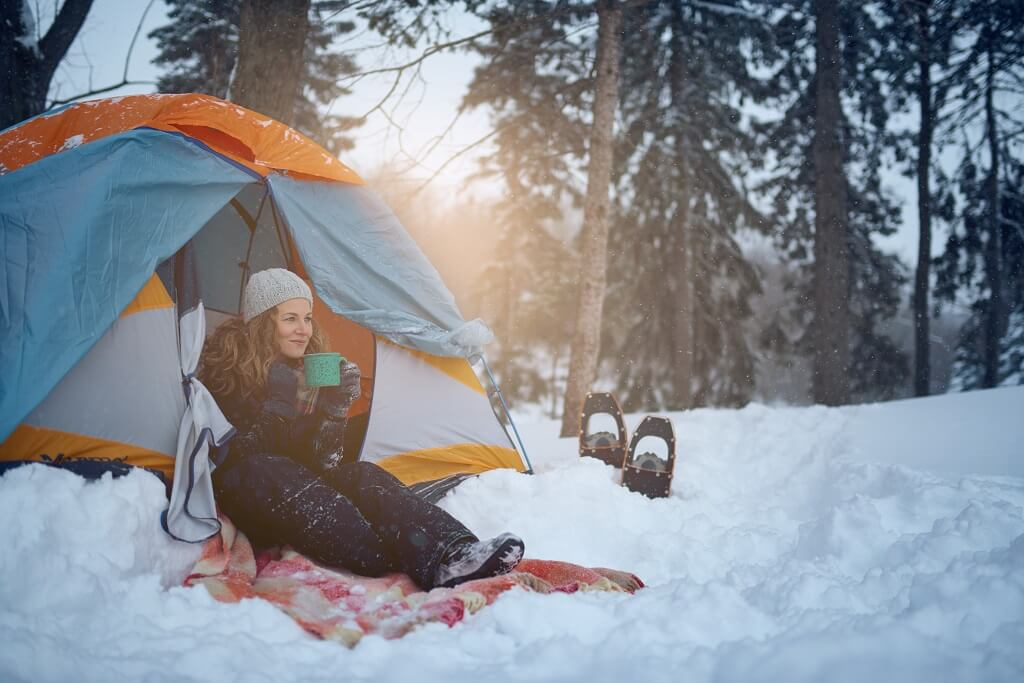What You Should Wear If You Want To Survive Camping In The Snow

Camping in the snow has perks. You'll encounter fewer crowds and bugs while you enjoy the peacefulness and beauty of a pristine wonderland. But, if you come unprepared, the cold can be challenging. Hence, to set up a successful winter camping, you need to know how to adjust to the challenges of freezing temperatures and unpredictable weather.
While it's true that a winter campout isn't for everyone, it can be a delightful experience if you come adequately prepared. Keeping dry and warm when camping in the snow is crucial to feeling comfortable, and what you wear makes all the difference.
If you want to survive camping in the snow, here's what you should wear:
1. Accessories
Even simple accessories go a long way to providing comfort during cold days. Some of the accessories you should bring and wear when camping in the snow are the following:
- Gloves And Mittens – Fleece gloves can provide basic warmth, but the insulated ones with breathable/waterproof shells are better. You can also opt to bring heated gloves for superior heating and keeps cold air from robbing your hands of warmth. Mittens, on the other hand, share warmth, but using it means sacrificing a bit of your dexterity.
Whatever you choose, it would be best to bring an extra pair in case the other ones get wet.
- Winter Hat – A synthetic beanie or even a simple wool hat will work well. Make sure the hat covers your ears. Consider a balaclava or a facemask if your face gets cold.
- Goggles And Glasses – Eye protection from sun and wind is essential. Choose glasses or goggles with dark lenses. Also, opt for those with VLT (visible light transmission) of only about 0-19%.
For overcast conditions, opt for visible light transmission of about 20-40% or higher.
- Socks – Make sure not to wear cotton socks. The appropriate sock thickness depends on your boot fit. Extra-thick socks won't keep the feet warm if it's going to make your boots too tight. Don't forget to bring additional socks.
2. Wear Layers
Aside from a survival knife, layers are the best friend for every outdoor adventurer. Keep in mind that a few layers are going to trap heat and keep you warm more efficiently than wearing a single thick layer. Also, since cotton absorbs moisture, make sure to stay away from cotton materials so you wouldn't get very cold quickly.
Learn more about the layers below:
- Outer Layer – You need a highly waterproof outer layer to keep you dry when you're outside the tent. Don't forget to take this layer off before getting inside the tent again if you've gotten wet.
- Mid Layer – This layer is what insulates your body. It could be fleece-lined trousers or a heavy fleece. If it gets very cold, a lightweight down jacket is another thing you can consider.
- Base Layer – The base layer is what acts almost like your second skin. It helps in trapping warm air. Ideal first layers are synthetic materials or merino wool. You can wear more than one base layer when it's freezing.
3. Footwear
You can use the traditional hiking boots if you'd only find a few inches of snow on the ground. However, winter or mountaineering boots are better in deeper snow since they're waterproof and insulating. You can also consider using gaiters if you want a bit of added warmth while keeping the snow out of your footwear.
When you're going for snowboarding or skiing as part of your camping adventure, take note that such activities require specialized boots that are suitable for the snowboard bindings.
4. Sleeping Bag
Wind chill lowers temperatures in a winter night time. So, aside from wearing accessories, layers, and footwear, you also need to have a sleeping bag that's suitable for extremely low winter temperatures.
Opt for 3 or 4 season sleeping bags. Down sleeping bags are also a popular choice for winter campouts due to its very high warmth to weight ratio.
A quick tip: when you're already inside the sleeping bag, don't cover your mouth and nose as it will trap moisture from your breath, making you feel cold quickly. For extra insulation, consider wrapping a jacket or blanket around the bottom of the sleeping bag.
Conclusion
Wearing the right clothing and managing layers properly are crucial to your comfort while camping in the snow. Make sure to have the things mentioned above at your disposal for an enjoyable and safe camping experience.
Also, don't forget to secure your campsite from possible hazards and check the weather condition from time to time when you're already in the area.
839GYLCCC1992



Leave a Reply